+4hrs Footage Capture Excluded
Table of Contents [Show]
Hyperspace Dogfights Review
April 29th, 2022
Hyperspace Dogfights has to be one of the most enjoyably-addictive, brilliantly-crafted passion projects I've ever had the pleasure of recommending. It is moderately complex, brims with style and flair, and offers a vast selection of ships, weapons, items, and enemies to test your mettle against. In this review I will explain what quickly made this game one of my favorites, as well as why it feels so unique compared to other games in this genre.
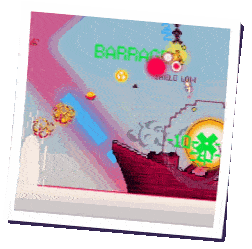
In this shoot-'em-up, your craft utilizes a four-directional booster system that allows you to hover in the air, then immediately bank right, left, or reverse-thrust at will. Mouse aim (which I highly encourage players to use) then acts as the craft's rudder and elevators, helping it precisely point in a specific direction even while stalling.
This system enables you to shoot at enemies while remaining static in the air, or fly parallel to the ground as you engage them. This is in stark contrast to games like LUFTRAUSERS, where you briefly stop accelerating, point the aircraft at the enemy, fire, then point away in order to make your escape. In turn, this sets a high skill ceiling for players to reach, but makes capturing objectives, chasing after opponents, and avoiding damage trivial.
Weapons are deliberately made to be inaccurate while boosting, further encouraging the use of reverse and side-thrusters in order to line yourself up with a target. This shift is shown on the digital aim display module, getting narrower or wider depending on the craft's state of motion. The rest of the UI is just as intuitive. The Shield UI is a rhombus that gets narrower with each hit; targeting warnings are shown around the jet, calibrated at the start of each run and rebooted if you suffer EMP damage.
Attacks and cooldowns are telegraphed through crosses, sparks, popup text and sound cues. Damage numbers and kill indicators further help convey information in the heat of battle. Each kill crossed out is followed by noticeable hitstop, making killing enemies incredibly satisfying. The crosshair can be changed to help contrast it from the game's background, and vanity effects that conceal enemies among the chaos can be turned on and off at will.
HDog's tendency to use text in order to emphasize different actions is particularly appealing to me. Jumping leaves "Jump!" text behind, dropping flares also drops "Flares!" text, the end of an item cooldown is signified through "Active charged!" text etc. This is also true for your opponents' actions. Furthermore, you get plenty of visual warnings when you are targeted by missiles, when being jammed, and when enemies are buffing other enemies.
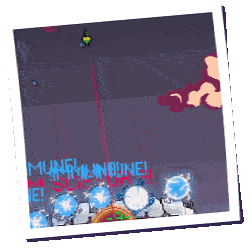
Speaking of jumping, you are briefly able to jump into a different plane of existence in order to avoid taking damage. Jumping allows you to go through solid terrain as well as hazards (which otherwise take out regular enemies), and pass your heat signature onto other enemies if targeted by missiles.
Some enemies also utilize this technology, helping them partially avoid your shots. As far as I'm aware, this mechanic is unique to HDog. It offers players an opportunity to rid themselves of homing missiles, otherwise a nuisance for both novice and veteran players alike, as well as lead pursuers into hazards.
HDog also sets itself apart by how lenient it is towards collisions with the ground and topmost cloud layer, as well as with other aircraft in general. In Jet Lancer, dropping to sea level is a death sentence; in HDog, you can survive inside the ground, and even deliberately dive into it to avoid gunfire. In fact, ship collision damage is a stat an entire run can be built around, improved through Passive items acquired throughout it.
This is a nice segue into speaking about HDog's stats, which I consider to be an entirely unique facet of it. There are over 20 attributes that can be influenced by items, including jet weight, its turn rate, the strength of its boost, its acceleration and stall speeds, how much friction and force projectiles extrude, how fast Shields regenerate and how strong they are, the length of the craft's jump and the jump drive recovery rate - and that's not even talking about max HP or damage modifiers usually present in other such games.
HDog further replaces regular game terminology with pseudo-scientific jargon, which I find fascinating. Weapons that utilize bullets do so through "kinetic" damage; laser damage is referred to as "photon" damage, a stun is a "disorient", fire is "cascade", difficulty is "escalation". Item duplicates are "stacks", teleporting is "displacing", extra life is "death defiance", beating waves flawlessly increases the Luck stat, aptly named "coolness".
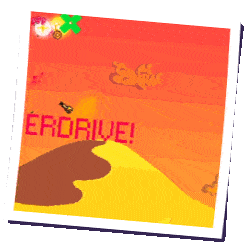
There are far too many of these to name, but the game successfully manages to build what could be considered a feasible reality around its far-futuristic setting, heavily supported by these tooltips, as well as descriptions for each item and ship that further expose players to game lore.
Each ship starts with an Active item that can then be exchanged for others during the run; items that fire missiles, drop mines, clear projectiles, heal you, afflict enemies with debuffs, drop money or containers, summon fire support teams and more. All aforementioned game mechanics provide a myriad of tools to both deal with and avoid damage, as well as navigate the terrain, and dispatch enemies with speed and precision.
Then come the actual guns that are given to you throughout the run at random. Those are split into different damage and projectile types, as well as separated by tiers of quality, with random modifiers on top. Unlike other dogfighting games, HDog elects to go down the Roguelite route, where it drops new items after each wave, instead of having you select a loadout before a run and sticking to it for its duration.
As a result, runs end up being highly varied in terms of equipment, which extends the replayability of the game. You are also actively encouraged to try new playstyles out by unlocking new items, instead of leaning towards a meta through one "best" approach. You can still curate your experience by deliberately using ships that start with favorable equipment, however runs will still differ from one another by the end of each session.
After nearly 150 hours of play, the weapon hierarchy seems clear to me. Some enemies and bosses (including the final one) project shields which eliminate most types of projectiles, making strong Photon contenders that ignore these incredibly valuable. Those deal the same amounts of damage as other weapons in the same tier, except they're accurate, connect with the target instantly, and usually apply a debuff on top.
Then you have Kinetic railguns that shoot bolts accurately and quickly. Those are some of the strongest weapons in the game in terms of damage, so I'd say Kinetic weapons closely follow Photon ones. The middleground is then Explosive weapons that utilize AoE damage, although those can hit you too if you're not being careful. EMP weapons are a rare sight, so I mostly ignore them; half of them are completely useless, and half fairly strong.
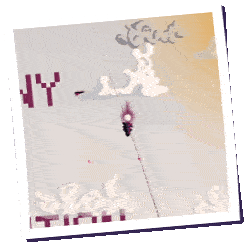
Finally, you have Melee weapons - arguably the most unique addition a dogfighter could possibly feature - that feel the weakest and least effective, particularly due to their low damage output and short reach that puts you at a disadvantage.
I feel the Melee damage type should have been better balanced against the other damage types, and that Photon weapons could have been made less effective so as to not be nearly mandatory to use if you want to reach (and beat) the endgame.
Despite the imbalanced weapon types, HDog has other great things going for it. A rewarding meta-progression system ensures you stay occupied for hours upon hours on end, progressively unlocking hundreds of Passives through combining weapon loadouts, losing, winning, or playing games, beating enemies and bosses, reaching different zones, using specific ships, completing challenges, and reaching certain waves in Endless mode.
Passive items are also split into tiers, with the lowest usually providing weaker stat upgrades, the highest providing game-carrying items, and the in-between providing stronger stat boosts with a negative trade-off that requires consideration on the players' part. The Passive pool further modifies a dozen or so unique stats, like Shot Lifetime, Count, and Sway, Homing Force, Explosion Size etc. Each upgrade feels significant, and has a great piece of storytelling behind it, which I highly encourage players to engage with.
There is a system in place that rewards good performance by raising the Luck stat with every perfect wave, which in turn affects loot drop rates and quality, heal chances, and the amount of money gained. The longer you play, the higher the difficulty gets, allowing you to make more money at a slightly heightened risk of dying.
Different weapon systems can be targeted to cripple both regular enemies and bosses alike. If said bosses are beaten flawlessly, players get extra loot for their trouble. Enemies can spawn as Elite, and are made stronger, faster, with new attack patterns - but drop more money as compensation. Destroying ships only partially allows them to continue firing at you as they fall out of the sky, while destroying them fully creates debris, which players then have to avoid if they don't want to damage their Shield.
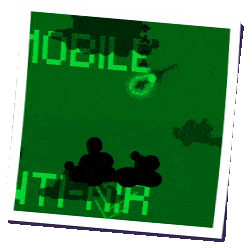
HDog is not solely about killing enemies, which I appreciate. You are often tasked with blowing up key assets, hacking or scanning on-site technology, escorting ships until they can jump, destroying convoys or artillery pieces.
I have waited until this far into the review to talk about the neon-pink elephant in the room - the game's aesthetic and choice of color. Personally, I feel the game is very fashionable, and manages to bring the neo-futuristic vibe across well; however, I also understand that prolonged exposure to bright pink and green scenery may prove to be an issue for most players.
I would like to point out that the other games the dev has made deliberately, and exclusively, use a neon-bright color palette, and that this seems to be intentional artistic design. It has been brought up to the dev on multiple occasions, alas he remains firm with his decisions. While playing longer sessions has been somewhat taxing on my eyes, the issue mostly pertains to the title screen, as well as two particular stages out of seven.
This game is an amazing blend of unique game mechanics, hundreds of items and weapons to unlock, almost two dozen ship variants to utilize, new zone and boss variants to discover, secrets, multiple playable modes, as well as optional lore for those who want to further indulge themselves with the incredible world-building this game does.
It is downright addictive - and I don't use that term lightly. If you're a fan of Roguelites, and think a dogfighting one might be up your alley, you owe yourself a favor to try this one.